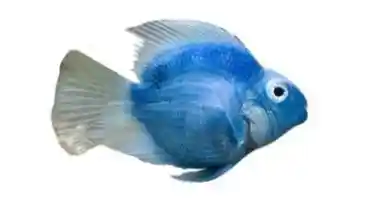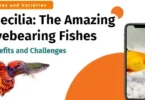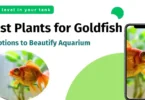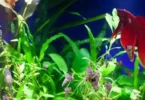Welcome to our comprehensive guide to blue parrot fish, where we delve into the mesmerizing world of these aquatic wonders. At PetsCareWorld, we are committed to providing you with the most detailed and accurate information to help you make informed decisions about your aquarium. In this article, we’ll explore the captivating features, care requirements, and unique charm that blue parrot fish bring to your underwater oasis.

Blue parrot fish (Scientific name: Hoplarchus psittacus) have earned their place as one of the most sought-after species in the aquarium hobby. Their vibrant colors and distinctive personalities make them a delightful addition to both beginner and experienced aquarists’ tanks. In this guide, we’ll uncover the secrets to keeping these stunning creatures happy and thriving in your aquarium.
Blue Parrot Fish: Appearance and Behavior
Blue parrot fish boast a striking appearance, with their bodies adorned in shades of azure blue, reminiscent of the clear ocean waters. Their beak-like mouth and expressive eyes add to their charm. These intelligent fish exhibit curious behavior, often interacting with their environment and other tankmates. Observing their playful antics can be a therapeutic experience for any aquarist.
| Aspect | Description |
|---|---|
| Appearance | Vibrant azure blue color, beak-like mouth |
| Curious and interactive with the environment | |
| Behavior | Curious and interactive with environment |
| Playful antics, engaging to observe | |
| Intelligent and adaptable to tank setup |
Setting Up the Perfect Habitat
Creating a suitable habitat is important for the well-being of your blue parrotfish. A spacious tank of at least 50 gallons is recommended to accommodate their active nature. Provide ample hiding spots with driftwood, rocks, and live plants. Maintain a water temperature between 76-82°F (24-28°C) and a slightly acidic to neutral pH level of 6.5-7.5. A high-quality filtration system will help replicate their natural ecosystem and keep the water pristine.
Feeding Your Blue Parrot Fish
To ensure the optimal health of your blue parrotfish, a balanced diet is essential.
- A balanced diet with high-quality pellets, flakes, and frozen foods.
- Protein-rich treats such as brine shrimp and bloodworms.
- Feed 2-3 times a day, only what they can consume in a few minutes.
- Avoid overfeeding to maintain water quality.
- Monitor their eating habits for any changes in appetite.
Following these feeding practices will help ensure the optimal health and vibrancy of your blue parrot fish.
Blue Parrot Fish: Maintaining Optimal Health
Regular maintenance plays a pivotal role in keeping your blue parrotfish thriving. Perform routine water changes of 25% every two weeks to maintain water quality. Monitor ammonia, nitrite, and nitrate levels using reliable test kits. Keep an eye out for any signs of stress, disease, or unusual behavior, and take prompt action if needed.
Maintaining optimal health for your blue parrot fish is essential to ensure their well-being and longevity. Here are some key points to consider:
- Regular Water Changes: Perform regular partial water changes (about 25% every two weeks) to maintain water quality and remove accumulated toxins.
- Monitor Water Parameters: Use reliable test kits to regularly check ammonia, nitrite, nitrate levels, pH, and temperature to ensure they are within the appropriate range.
- Adequate Filtration: Invest in a high-quality filtration system to keep the water clean and clear from debris, uneaten food, and waste.
- Provide Balanced Nutrition: Offer a well-balanced diet that includes high-quality pellets, flakes, and occasional protein-rich treats like brine shrimp and bloodworms.
- Avoid Overfeeding: Feed your blue parrot fish 2-3 times a day with small portions they can consume within a few minutes to prevent overeating and maintain water quality.
- Variety in Diet: Include occasional vegetable matter in their diet to provide essential nutrients and promote a healthy digestive system.
- Quarantine New Additions: Quarantine new fish before introducing them to the main tank to prevent the spread of potential diseases.
- Observe Behavior: Regularly observe your blue parrot fish for any signs of stress, disease, or unusual behavior, and take prompt action if needed.
- Minimize Stress: Reduce stress factors in the aquarium by providing ample hiding spots, maintaining stable water conditions, and avoiding sudden changes.
- Maintain Cleanliness: Regularly clean the aquarium glass, decorations, and gravel to prevent the buildup of algae and waste.
- Keep Tankmates Compatible: Choose tankmates that are compatible with blue parrot fish and won’t cause undue stress or aggression.
Compatible Tankmates for Blue Parrot fish
Blue parrotfish are generally peaceful, but careful consideration is essential when choosing tankmates. Opt for species that share similar water conditions and temperament.
- Peaceful cichlids
- Tetras
- Catfish
- Gouramis
- Swordtails
- Platies
- Rainbowfish
- Corydoras
- Rasboras
- Plecos
These compatible tankmates can coexist harmoniously with blue parrotfish, creating a balanced and thriving aquatic community in your aquarium.
Avoid aggressive or fin-nipping species to ensure a harmonious aquatic community.
Blue Parrot Fish Breeding Challenges and Insights
Breeding blue parrot fish in captivity can be challenging due to their unique reproductive behavior. They are known as “mouthbrooders,” with the female carrying and protecting the eggs in her mouth. Provide ample hiding spots and closely mimic their natural environment to encourage successful breeding. Patience and dedication are key when attempting to breed these captivating fish.
Breeding blue parrot fish can be a rewarding but challenging endeavor. Understanding the intricacies of their unique reproductive behavior and providing the ideal conditions are important to increasing the chances of successful breeding. Here are detailed insights and tips to help you navigate the breeding challenges:
- Patience and Observation: Breeding blue parrot fish requires patience. They might not breed immediately, and it’s essential to observe their behavior over time to identify potential breeding cues.
- Mimicking Natural Habitat: Creating an environment similar to their native habitat can encourage breeding. Provide ample hiding spots with caves and crevices where they can lay eggs and protect their young.
- Water Parameters: Maintaining stable and pristine water conditions is vital for successful breeding. Monitor temperature, pH, and water hardness to ensure they are within the optimal range for blue parrot fish.
- Feeding and Nutrition: A well-balanced diet is crucial for their reproductive health. Offer nutrient-rich foods and consider adding live or frozen treats like brine shrimp and bloodworms to enhance breeding readiness.
- Conditioning Period: Before attempting to breed, it’s beneficial to condition the breeding pair with a varied and nutritious diet for a few weeks. This helps prime their bodies for successful reproduction.
- Choosing a Compatible Pair: Selecting a healthy and compatible breeding pair is essential. Observe their behavior together and ensure they get along well in the same tank.
- Egg Laying and Fertilization: Blue parrot fish are mouthbrooders, where the female carries and protects the eggs in her mouth. After successful fertilization, the female will carry the eggs for approximately 10 to 14 days until they hatch.
- Separating from Tankmates: To prevent stress and potential predation, consider setting up a separate breeding tank or provide ample hiding spots for the female to isolate herself during the mouthbrooding period.
- Post-Breeding Care: After the eggs hatch, the fry will continue to seek protection in the female’s mouth. Separate them from the main tank to avoid accidental ingestion by other tankmates.
- Rearing Fry: Providing suitable fry food, such as crushed flakes or specially formulated fry food, is vital for their growth and survival. Frequent water changes and monitoring water quality are essential during this delicate stage.
Conclusion
The blue parrotfish stands as a captivating gem in the world of aquarium keeping. Their stunning appearance, engaging behavior, and distinct personality make them a cherished addition to any aquatic enthusiast’s collection. By following our comprehensive guide, you’ll be well-equipped to create a thriving and vibrant underwater haven for these remarkable creatures. Explore the enchanting realm of blue parrot fish and elevate your aquarium experience to new heights.
Remember, at PetsCareWorld, we are your partners in aquatic excellence, dedicated to providing you with unparalleled guidance and insights for your underwater journey. Dive in and discover the extraordinary world of blue parrot fish today!
Frequently Asked Questions (FAQs)
Are blue parrot fish rare?
Blue parrotfish are relatively uncommon in the wild, and their availability in the aquarium trade can vary. While not extremely rare, they are considered unique and sought after by hobbyists.
What do blue parrot fish eat?
Blue parrot fish have an omnivorous diet. They primarily eat high-quality pellets and flakes. Supplement their diet with protein-rich foods like brine shrimp and bloodworms, and occasionally include vegetable matter for balanced nutrition.
Can you keep a blue parrot fish?
Yes, blue parrot fish can be kept in a home aquarium. However, they require proper care, a suitable tank setup, and a balanced diet to ensure their well-being.
Is Polar Blue parrot fish aggressive?
The temperament of Polar Blue parrot fish, like any fish, can vary. They are generally not known to be aggressive, but individual behavior can depend on factors such as tank size, mates, and environment. It’s important to monitor their interactions and provide appropriate tank mates.
Are blue parrot fish suitable for beginners?
Yes, blue parrot fish are suitable for beginners due to their hardy nature and adaptability to various tank conditions.
What is the ideal tank size for blue parrot fish?
An aquarium of at least 50 gallons is recommended to provide ample space for their active behavior.
Can blue parrot fish live with other fish species?
Yes, they can coexist with peaceful cichlids, tetras, catfish, and other compatible species. Avoid aggressive tankmates.
How often should I feed my blue parrot fish?
Feed them 2-3 times a day, offering an amount they can consume within a few minutes to prevent overfeeding.
Are blue parrot fish prone to any specific health issues?
They can be sensitive to poor water quality. Regular water changes and monitoring water parameters are crucial for their well-being.
How can I encourage breeding in blue parrot fish?
Provide hiding spots and conditions that mimic their natural habitat. Patience and observation are key during their unique mouthbrooding breeding process.
What is the lifespan of blue parrot fish in captivity?
With proper care, they can live for around 10-15 years, making them a long-term commitment for aquarium enthusiasts.
Can I keep blue parrot fish in a community tank with plants?
Yes, they can coexist with live plants, but be mindful of their curious behavior, which might lead to some plant nibbling.
Do blue parrotfish require a specific water temperature and pH level?
Maintain a water temperature of 76-82°F (24-28°C) and a pH level between 6.5-7.5 for optimal health.
How can I tell if my blue parrotfish is stressed or unwell?
Watch for signs like decreased appetite, lethargy, color fading, or erratic behavior. Any noticeable changes should prompt further investigation and appropriate action.












